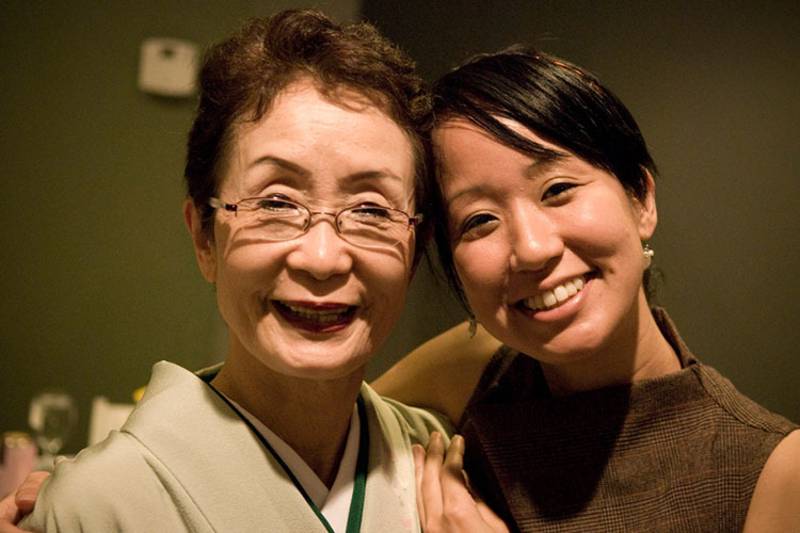Next week, Japan House will celebrate the 20th anniversary of it’s current home on Lincoln Avenue in Urbana. Founded by Shozo Sato, a theatre director and master of Zen arts in the early 70’s, it was a housed in a small Victorian home where the Alice Campbell Alumni Center now stands. When the need for a new space arose, his assistant Kimiko Gunji was ready to take the reins and develop Japan House into what it is today. She was the director for the better part of these past 20 years. Gunji has been honored with numerous awards, including the Order of the Rising Sun, a prestigious honor bestowed by the Emperor of Japan for her work in promoting Japanese culture. Shel remains involved now that her daughter, Jennifer Gunji-Ballsrud is continuing her family’s legacy as director. I spoke with Gunji-Ballsrud about her family, the history of Japan House, and her plans for its future.
Smile Politely: Your parents have a really interesting story of meeting and getting together. Can you talk about that a little bit?
Jennifer Gunji-Ballsrud: My father came to the University of Illinois, and he basically fell in love with the community and never wanted to leave. Then it was marriage time, and my grandmother was frantically trying to do an omiai, which is a marriage setup. In kind of a roundabout way, my father’s cousin who was living in Japan was on a train with my mother’s father. They started having a conversation, and they got to the point to where he (my mother’s father) said “I have a daughter who’s very interested in America” and he (my father’s cousin) said “well I have a cousin who lives in America, can we exchange addresses?” They exchanged addresses and my parents became pen pals for about a year, then my father was like “well, do you want to get married?” And she was like “Sure” and so he flew out there two weeks before they got married, met her for the first time, met her family, and then they married. He came back and she flew here a month later, and then they never left. She was the perfect little Japanese wife for the first couple of years, and then she was like “I’m bored and I need to do something” so she went and got another master’s degree in Library and Information Sciences. That’s how she became involved with the University and she was a grad student, so she started working for Professor Shozo Sato, and that’s how it all began.
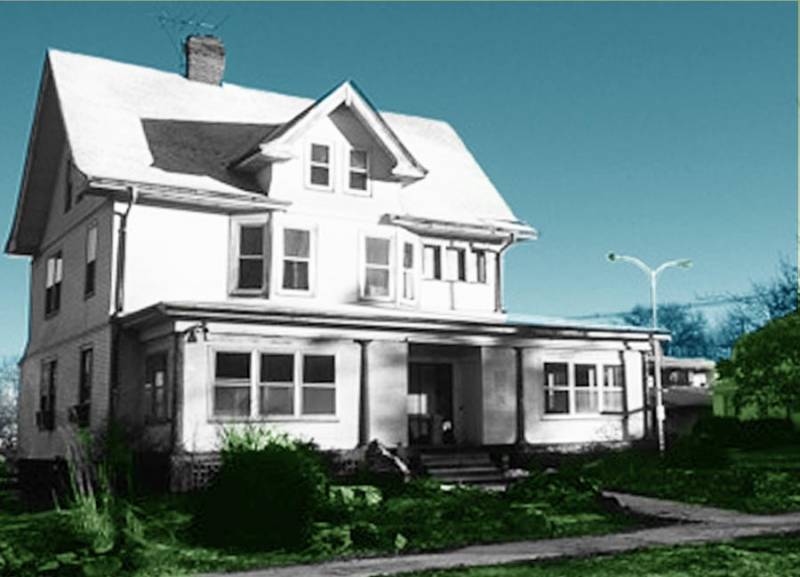
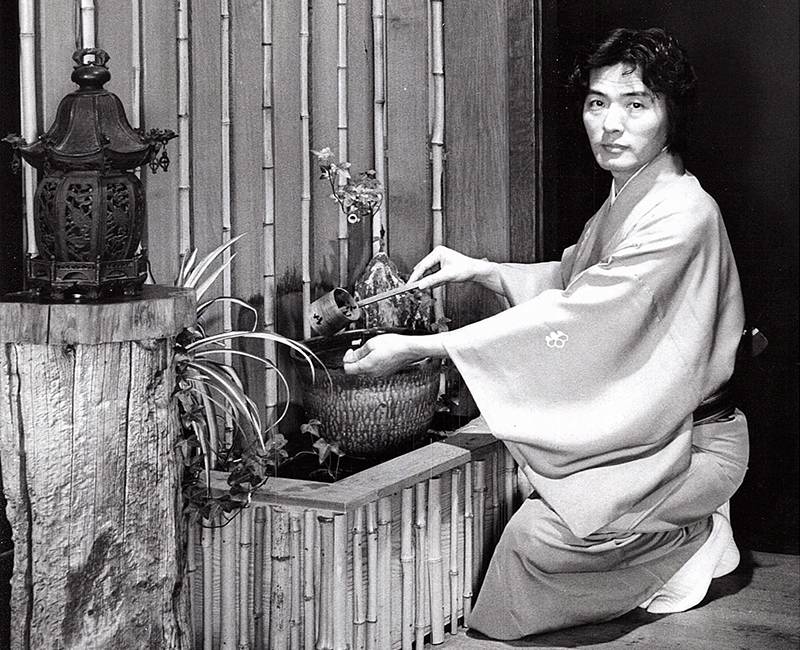 The original Japan House and Shozo Sato
The original Japan House and Shozo Sato
SP: This 20th anniversary coincides with your mother’s tenure at Japan House. How did she come to be involved and eventually director?
Gunji-Ballsrud: She was Professor Sato’s assistant. When he found out that she studied tea, Ikebana, and classical dance, they instantly became connected to one another. As the original Japan House started to develop, she was always working with him. In the early 1990s, the University said the Alice Campbell Center was coming in so they needed the land. Professor Sato decided to retire. At that time my mother was very good friends with Morton Weir, and Roger Martin at the University, and they wanted to see Japan House continue. The University said if you raise $2 million, we will allocate land for you to build, and we’ll give you two years to do it. I think she did it in 18 months and raised $2.4 million dollars.
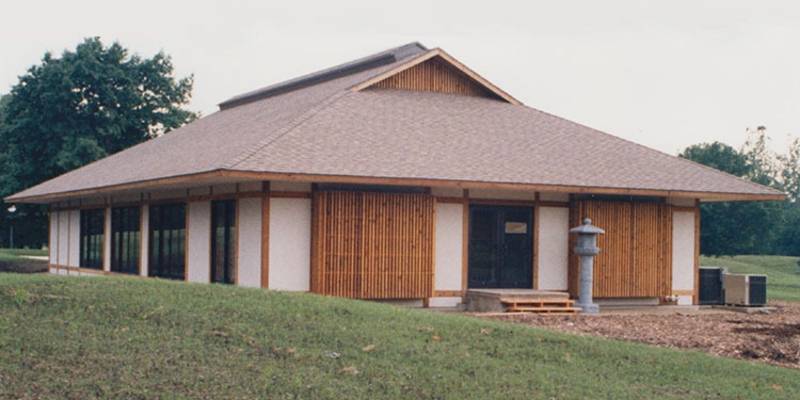 Japan House in 1998
Japan House in 1998
SP: How did she do it?
Gunji-Ballsrud: She did everything. She wrote grants, she wrote to companies like Kikkoman and Mitsubishi. Because of my father’s connection with Rotary she was able to get lots of support from various not only local Rotary groups, but Rotary International and Japanese Rotary groups. There’s a group called the Japan Illini Club which are all alums of the University of Illinois who have now gone back to Japan, they gave money. As many people as she could ask, people kind of came out of the woodwork and just said yes. She’s a force of nature and knew we had to raise the money, and she just did it. She also had Mort and Roger right alongside her, so it wasn’t kind of a singular effort but a great collaborative effort between all of them and they were able to raise that money. It was phenomenal. They broke ground in 1997, and we opened our doors in 1998.
With this new facility she started to do more programming, because the original Japan House was very small. You really couldn’t have a lot of people within the space. With this facility she really expanded her activities. She did that from ‘98 until 2012 and then at that point in time it was this big question of who was going to take over. I was firmly planted in Graphic Design, I was chair of the program, but after much discussion I decided to come over here. I continued to do both for several years, and then I finally had to make a decision.
SP: I can imagine this place has been intertwined with your family…
Gunji-Ballsrud: Forever. At the original Japan House my sister and I would be upstairs while she taught classes. Sometimes we would peer over and watch, and sometimes we were invited in as guests. Very much wholly a part of Japan House from the original all the way through this Japan House. When the inception of this Japan House happened, I was gone. I came back right after it was open and would teach on occasion or assist in her tea class. I was always involved, but didn’t come full on until I was director.
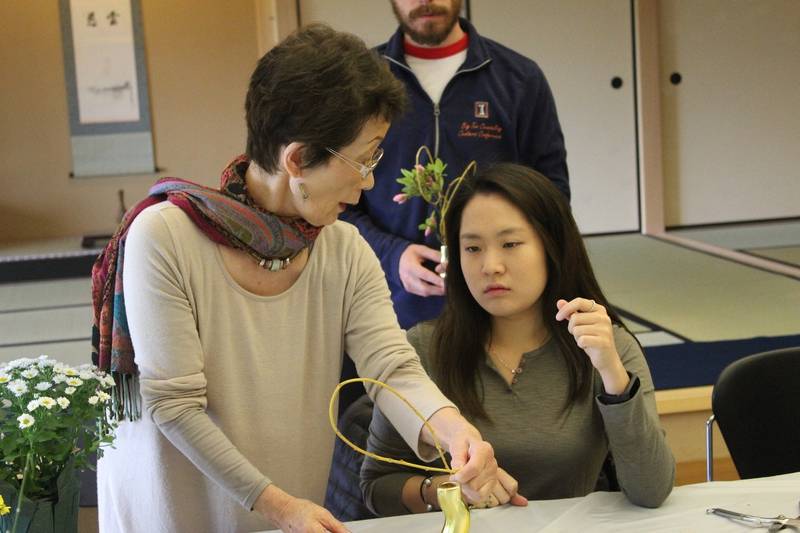
SP: Where do you think your mother had the most influence in what was happening here?
Gunji- Ballsrud: Her legacy was always the teaching component. She’s a teacher through and through. She was connected to the Campus Honors program, and she became very intimately involved with that program and her students. The development of relationships with these students was unbelievable because Japan House is a non-degree seeking entity – but she really nurtured those relationships and now those people are donors. That’s what is so amazing about this facility. Even though we don’t grant a degree, the relationships that we build through the classes she started really affect people. I feel like that legacy is what is owed to her. That development of these types of classes that really make us think about ourselves and the world we live in differently. It transforms students and the people who come here. That’s what I try to continue. But she knew what her capacity was, and I took it from there and said okay, this is how many people you’re touching and that’s remarkable, but we need to expand even more. Some people talked about the lack of accessibility to Japan House, it never being open, or it’s very much about the “quiet” culture of Japan — but there’s so much more about Japanese arts and culture that has an energy, that has a vibrancy. That’s where I wanted to go so that we could start opening up our doors even more.
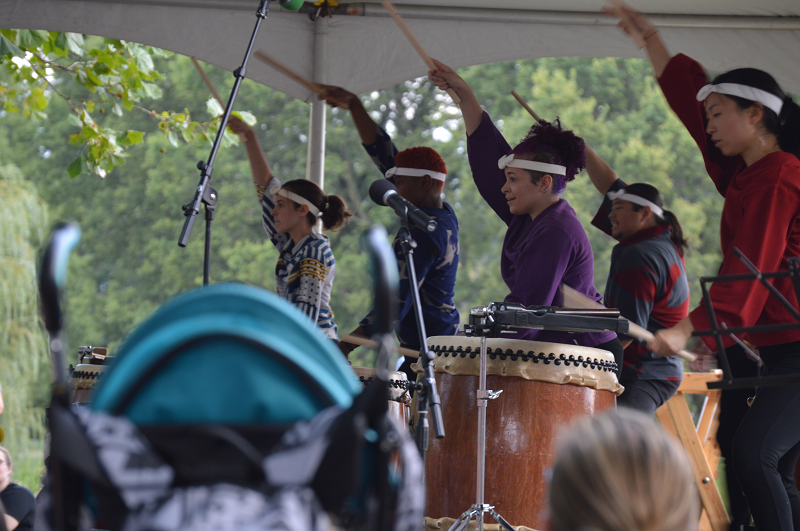
SP: What type of impact have you seen since you’ve expanded on the reach of Japan House, and opened the doors beyond the campus and into the community?
Gunji- Ballsrud: I was born and raised here, so I have a very strong love and kinship to this community, and my father loved this community. He gave back in so many different ways, and he did this in a quiet way. My father put that seed in my head. When I came back in the late 90’s our community was not thriving like it is now. The idea started to become: Japan House is a small entity, and all of these small businesses that make our community great – we need to band together. That was my thinking. How do I do that and connect with these businesses that I respect. That’s when I started Matsuri, and bringing in different vendors and such. Then I wanted to outreach to Asian-related businesses so that we could expand what we do through the community.
SP: What was it like taking over for your mother? Was it intimidating? Or did it seem like a natural transition?
Gunji-Ballsrud: Let’s just say she still has a key to the place. It was a challenge. The tea group was started by her, the Ikebana group, the flower arranging, they all utilize this facility because she was the director. It was hard to delineate all of that. And then how do you say no, and how do you reiterate to her that “you’re no longer director.” When I took over her classes, that was a very difficult thing for her to let go of. So I always invited her to come and give one or two lectures, and then I have found ways to partner with her in which she realizes she’s happy she doesn’t have to do it full time. We developed an online Chado: The Way of Tea class and we’re on our 5th year. There was this wonderful way of capturing all of her lectures on video, and sharing that in perpetuity. We work very closely together with the tea group, and I let her run with the flower group because it’s not really my thing. Any time there is an event I like to talk with her first, and get her feedback. It’s been the best transition for somebody that was so involved in developing this place. If anybody else would’ve come in, it wouldn’t have worked. She wouldn’t have had the key to the place, and they might’ve even closed the door to her.
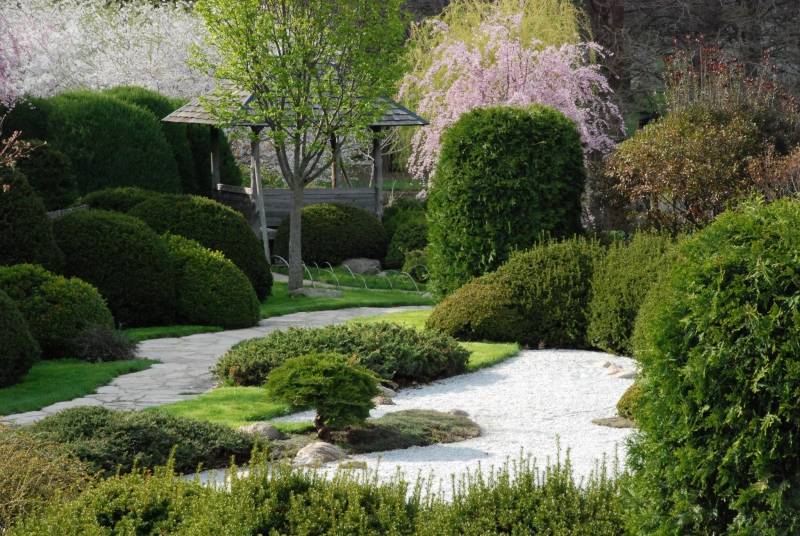
SP: What do you see on the horizon for Japan House?
Gunji-Ballsrud: I have been feverishly trying to do an annex. Our biggest issue is that when we do a tea ceremony, we can’t do anything else. If we want to increase our programming, we just don’t have the space. I’ve already raised the money, so we will be up and running in 2021. When we built this in 1998, we made the building accessible but the tea garden was not. There’s really no way to do that and still have authenticity. But I’ve decided that with the annex we’re going to have a fully accessible tea garden. The other aspect that was troubling to me is that our tea room, although authentically built, doesn’t enable somebody in a wheelchair to actually come into the tea room. You could come up to the edge, but there’s still a separation. I’m working with a tatami craftsman to develop a tatami mat that can withstand the weight of a wheelchair, and we’ll have a tea room on the same level as the floor. We will have exclusively table style tea (a practice developed in the18th century to “open the doors to the West”) there so that we’re all at the same level. The idea of having everyone at the same eye level is very important in tea culture so that we show our humility and equalness. I wanted to make sure we could continue that theme in the accessible tea room.
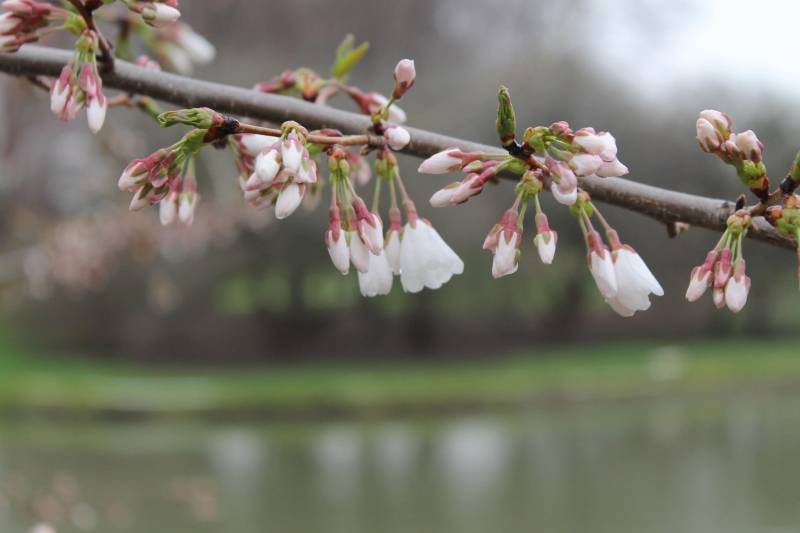
Gunji-Ballsrud describes Japan House as a “hidden gem” and an “escape” and it truly is. As you walk from the parking lot down the path, covered by a canopy of cherry trees, and come upon the house and it’s gardens, it feels tranquil and set apart from the bustle of campus. It’s obviously meant a lot not just to its directors, but to the many students who have come through the doors. Each year its reach in the community expands, and next weekend’s 20th anniversary festivities are an example of that — one which you should take advantage of. You can see the full slate of events here, and you can dig deeper into the history of this campus institution on their 20th Anniversary website.
Photos from the Japan House website and Facebook page.








